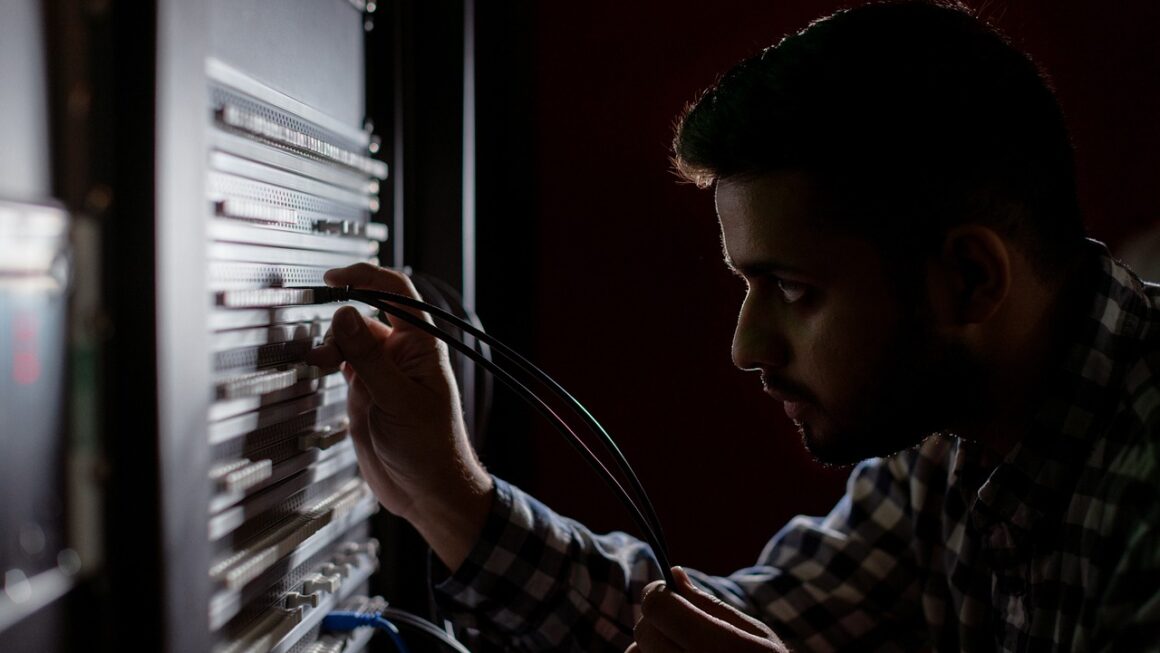AI and robotics are no longer futuristic concepts confined to science fiction. They are rapidly converging, transforming industries and impacting our daily lives in profound ways. By integrating artificial intelligence with robotics, we are creating intelligent machines capable of performing complex tasks with greater autonomy, efficiency, and adaptability. This synergy is revolutionizing manufacturing, healthcare, logistics, and countless other sectors, paving the way for a future where robots and AI work hand-in-hand to solve some of the world’s most pressing challenges. This post delves into the dynamic world of AI in robotics, exploring its key components, applications, and future trends.
The Core of AI-Powered Robotics
AI in robotics is more than just combining two technologies; it’s about creating intelligent systems that can perceive, learn, and act. These systems leverage machine learning, computer vision, and natural language processing to make informed decisions and execute tasks with minimal human intervention.
Perception: Seeing and Understanding the World
Robots need to perceive their environment accurately to interact with it effectively. This is where computer vision and sensor technology play a crucial role.
- Computer Vision: Enables robots to “see” by processing images and videos, identifying objects, and understanding spatial relationships.
Example: A robot in a warehouse uses computer vision to identify different types of packages on a conveyor belt, differentiating between boxes, envelopes, and fragile items.
- Sensor Integration: Integrates data from various sensors like LiDAR, cameras, and tactile sensors to provide a comprehensive understanding of the robot’s surroundings.
Example: Autonomous vehicles rely heavily on sensor fusion, combining data from cameras, radar, and LiDAR to create a 3D map of their environment, enabling them to navigate safely.
Cognition: Processing and Decision-Making
AI algorithms enable robots to process information, make decisions, and plan actions based on their perception of the environment.
- Machine Learning: Allows robots to learn from data and improve their performance over time without explicit programming.
Example: A robotic arm learns to assemble a complex product by analyzing thousands of examples and identifying optimal movements and strategies.
- Path Planning and Navigation: AI algorithms enable robots to plan optimal paths and navigate complex environments, avoiding obstacles and adapting to changing conditions.
Example: A delivery robot uses path planning algorithms to navigate sidewalks, avoid pedestrians, and deliver packages efficiently.
Action: Executing Tasks with Precision
The ability to translate decisions into physical actions is crucial for AI-powered robots.
- Robotics Control: Employs advanced control algorithms to ensure precise and coordinated movements of robotic arms, manipulators, and mobile platforms.
Example: A surgical robot uses high-precision control algorithms to perform delicate procedures with minimal invasiveness.
- Human-Robot Interaction (HRI): Focuses on designing robots that can safely and effectively interact with humans in shared environments.
Example: Collaborative robots (cobots) are designed to work alongside humans in manufacturing settings, performing repetitive or physically demanding tasks.
Transforming Industries: Applications of AI in Robotics
AI in robotics is transforming a wide range of industries, from manufacturing and logistics to healthcare and agriculture.
Manufacturing: Automation and Efficiency
AI-powered robots are revolutionizing manufacturing by automating repetitive tasks, improving quality control, and optimizing production processes.
- Automated Assembly: Robots can perform assembly tasks with greater speed, accuracy, and consistency than human workers.
Example: Automotive manufacturers use robots to weld, paint, and assemble vehicle components, significantly increasing production efficiency.
- Quality Control: AI-powered vision systems can inspect products for defects with greater accuracy and speed than human inspectors.
Example: Electronics manufacturers use robots with computer vision to identify defective components on circuit boards, reducing the risk of product failures.
Logistics: Streamlining Supply Chains
AI in robotics is optimizing logistics operations by automating warehouse management, delivery, and transportation.
- Warehouse Automation: Robots can automate tasks such as picking, packing, and sorting in warehouses, improving efficiency and reducing labor costs.
Example: Amazon uses robots in its warehouses to move shelves of products to human pickers, significantly reducing the time it takes to fulfill orders.
- Autonomous Delivery: Drones and self-driving vehicles are being used to deliver packages and goods more quickly and efficiently.
Example: Companies are testing drone delivery services for small packages, offering faster delivery times in urban areas.
Healthcare: Enhancing Patient Care
AI-powered robots are enhancing patient care by assisting with surgery, dispensing medication, and providing rehabilitation therapy.
- Surgical Robots: Robots can perform complex surgeries with greater precision and minimal invasiveness, reducing patient recovery times.
Example: The Da Vinci Surgical System is used by surgeons to perform minimally invasive procedures with enhanced precision and control.
- Rehabilitation Robots: Robots can assist patients with physical therapy, helping them regain strength and mobility.
Example: Robots are used in stroke rehabilitation programs to help patients relearn motor skills.
Agriculture: Increasing Crop Yields
AI in robotics is improving agricultural practices by automating tasks such as planting, harvesting, and crop monitoring.
- Precision Agriculture: Robots can use sensors and AI to monitor crop health, identify pests, and apply fertilizers and pesticides precisely where needed.
Example: Robots can autonomously navigate fields, collect data on crop growth, and identify areas that need attention.
- Automated Harvesting: Robots can harvest fruits and vegetables with greater speed and efficiency than human workers.
Example: Robots are being developed to harvest strawberries and other delicate crops without damaging the fruit.
Overcoming Challenges and Future Trends
While AI in robotics offers significant benefits, there are also challenges to overcome, including high initial costs, technical complexity, and ethical considerations.
Addressing the Challenges
- Cost Reduction: Reducing the cost of robots and AI systems is essential to making them accessible to smaller businesses and organizations. This involves innovations in manufacturing, software development, and open-source initiatives.
- Technical Expertise: Developing a workforce with the skills to design, deploy, and maintain AI-powered robots is crucial. Educational programs and training initiatives are key to bridging the skills gap.
- Ethical Considerations: Addressing ethical concerns related to job displacement, data privacy, and autonomous decision-making is paramount. Developing clear guidelines and regulations for the use of AI in robotics is essential.
Emerging Trends
- Edge Computing: Bringing AI processing closer to the robots, enabling faster response times and reduced reliance on cloud connectivity.
- Reinforcement Learning: Training robots through trial and error, allowing them to learn complex tasks without explicit programming.
- Swarm Robotics: Developing robots that can work together as a swarm to accomplish tasks more efficiently.
Conclusion
AI in robotics is transforming industries and shaping the future of work. By combining the capabilities of AI with the physical prowess of robots, we are creating intelligent systems that can solve complex problems, improve efficiency, and enhance our quality of life. As the technology continues to evolve, we can expect to see even more innovative applications of AI in robotics across a wide range of sectors. Embracing these advancements requires addressing the associated challenges and fostering a collaborative environment that encourages innovation and responsible development. The synergy between AI and robotics promises a future where humans and machines work together to build a more productive and sustainable world.




